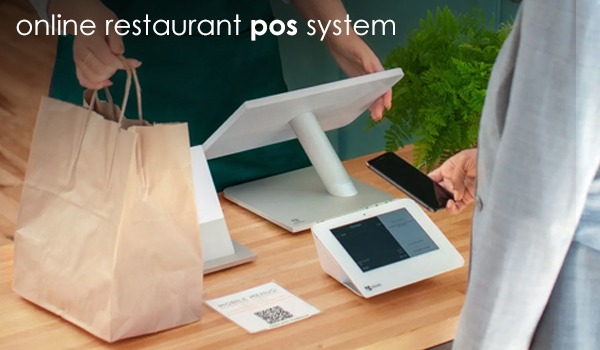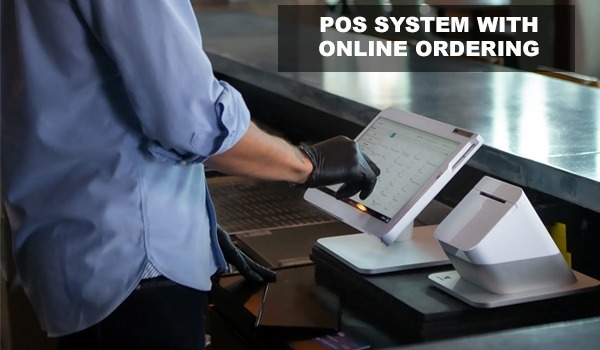
Best POS system for food truck in Pleasanton
In recent years, food trucks have become a popular and lucrative option for entrepreneurs in the food industry. However, managing the operations of a food truck can be challenging, especially when it comes to processing payments and managing inventory. This is where point-of-sale (POS) systems for food trucks come in, providing a solution for efficient and accurate transactions, tracking inventory, and managing customer data. In this article, we will explore the benefits of using a POS system for a food truck in Pleasanton, California, highlight some of the top-rated systems on the market, discuss factors to consider when choosing a system and provide tips for implementation and training.
Benefits of POS systems for food truck
POS systems offer a range of benefits for food trucks compared to traditional cash register systems. Here are some of the key benefits:
Mobility: POS systems are designed to be mobile, allowing food truck owners and operators to take orders and process payments from anywhere, even in remote locations.
Efficiency: POS systems can streamline operations by automating tasks such as order taking and inventory management, reducing the time and effort required to manage these tasks manually.
Accuracy: POS systems offer greater accuracy than traditional cash registers, reducing the risk of errors in order taking, payment processing, and inventory management.
Real-time data: POS systems provide real-time data on sales, inventory, and customer data, allowing food truck owners and operators to make informed decisions about their business.
Customer service: POS systems can enhance the customer experience by offering features such as digital receipts, loyalty programs, and online ordering.
Top-rated POS systems for food trucks
Here are some of the top-rated POS systems for food trucks in the industry:
Square POS: Square POS is a popular POS system for food trucks in Best POS system for food truck in Pleasanton that offers a range of features, including mobile payment processing, inventory management, and customer engagement tools such as loyalty programs and gift cards. It also integrates with a range of other business software and can be customized to meet the specific needs of a food truck.
ShopKeep: ShopKeep is another popular POS system for food trucks that offers features such as mobile payment processing, inventory management, and employee management tools. It also offers real-time analytics and reporting, allowing food truck owners and operators to monitor their business performance.
Toast POS: Toast POS is a comprehensive POS system for food trucks that offers features such as mobile payment processing, online ordering, and employee management tools
TouchBistro: TouchBistro is a user-friendly POS system for food trucks that offers features such as mobile payment processing, menu management, and customer engagement tools such as loyalty programs and gift cards. It also offers real-time analytics and reporting, allowing food truck owners and operators to monitor their business performance.
Vend: Vend is a cloud-based POS system for food trucks that offers features such as mobile payment processing, inventory management, and customer engagement tools such as loyalty programs and gift cards.
Factors to consider when choosing a POS system for a food truck
When selecting a POS (Point of Sale) system for a food truck, specific factors are tailored to the unique needs of mobile food businesses. Here are some important considerations:
Mobility and Portability: Mobility is crucial since you're operating a food truck. Look for a POS system that is lightweight, compact, and easily transportable. It should work seamlessly on a tablet or smartphone, allowing you to take orders and process payments anywhere within your food truck or at outdoor locations.
Offline Capabilities: Food trucks often operate in areas with limited or unreliable internet connectivity. Therefore, choose a POS system that offers offline functionality. This ensures that you can continue taking orders and accepting payments even when you're not connected to the internet. Once you regain internet access, the system should synchronize the data automatically.
Menu and Item Management: A food truck's menu can vary and change frequently. The POS system should allow you to easily manage and update your menu items, modifiers, prices, and availability. This flexibility is crucial for adapting to changing ingredients, specials, and customer preferences.
Order Management and Tracking: Efficient order management is essential to keep up with the fast-paced environment of a food truck. The POS system should enable you to take and process orders quickly, assign order numbers or names for tracking, and provide real-time updates on order status. This helps streamline your workflow and ensures accurate and timely service.
Integration with Payment Processors: Seamless integration with various payment processors is vital for food trucks. Choose a POS system that supports multiple payment options, such as credit cards, mobile payments (e.g., Apple Pay, Google Pay), and cash. It should be compatible with popular payment providers to ensure smooth and secure transactions.
Inventory and Ingredient Tracking: Efficient inventory management is crucial for food trucks to control costs and avoid ingredient shortages. Look for a POS system that offers inventory tracking features, allowing you to monitor ingredient quantities, set alerts for low stock, and generate reports for better inventory planning. This helps prevent wastage and ensures you have the necessary ingredients for your menu items.
Customer Relationship Management (CRM): Although customer interaction may be brief in a food truck setting, a CRM feature can still be valuable. Consider a POS system that allows you to collect customer data, such as email addresses or phone numbers, to build a customer database. This enables you to stay connected, send promotional offers, or request feedback to enhance customer loyalty.
Analytics and Reporting: Comprehensive analytics and reporting capabilities are essential for evaluating the performance of your food truck business. The POS system should provide insights into sales trends, popular menu items, peak hours, and other key metrics. Access to these data helps you make informed decisions, optimize your menu, and identify areas for improvement.
Cost and Affordability: As a food truck owner, managing costs is crucial. Consider the pricing structure of the POS system, including setup fees, transaction fees, monthly subscriptions, and any additional charges. Assess the value the system provides in terms of features, support, and scalability to determine the overall affordability and return on investment.
Customer Support and Training: Evaluate the level of customer support provided by the POS company, especially in terms of responsiveness and availability during your operating hours. Additionally, check if they offer comprehensive training materials, tutorials, or onsite assistance to help you and your staff learn and maximize the system's capabilities.
Implementation and training for POS systems in food trucks
Hardware and software setup: This involves installing the POS system hardware, such as the tablet or terminal, and downloading and configuring the POS software. It may also involve setting up other equipment, such as printers and card readers.
Staff training: Once the hardware and software are set up, staff will need to be trained on how to use the system. This may involve in-person training sessions or online tutorials, depending on the system.
Ongoing support: After the POS system is up and running, ongoing support is essential to ensure that any issues are addressed promptly and that staff have access to the resources they need to use the system effectively.
Conclusion
In summary, a POS system is a critical tool for food truck owners and operators, offering benefits such as mobility, efficiency, accuracy, and real-time data. Factors such as mobility, cost, features, ease of use, and integration should be considered when choosing a POS system. To ensure a smooth transition to a new POS system, planning, communicating with staff, and taking advantage of training resources are important. POS systems for food trucks maintain security and comply with data privacy laws through measures such as encryption, user authentication, data backup, and compliance with data privacy laws.







